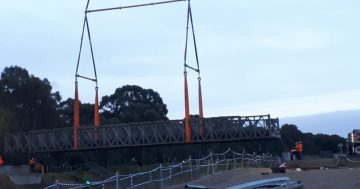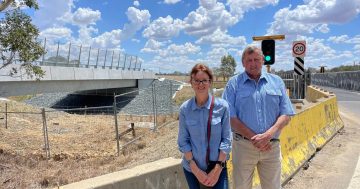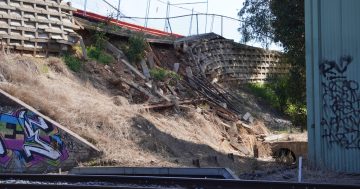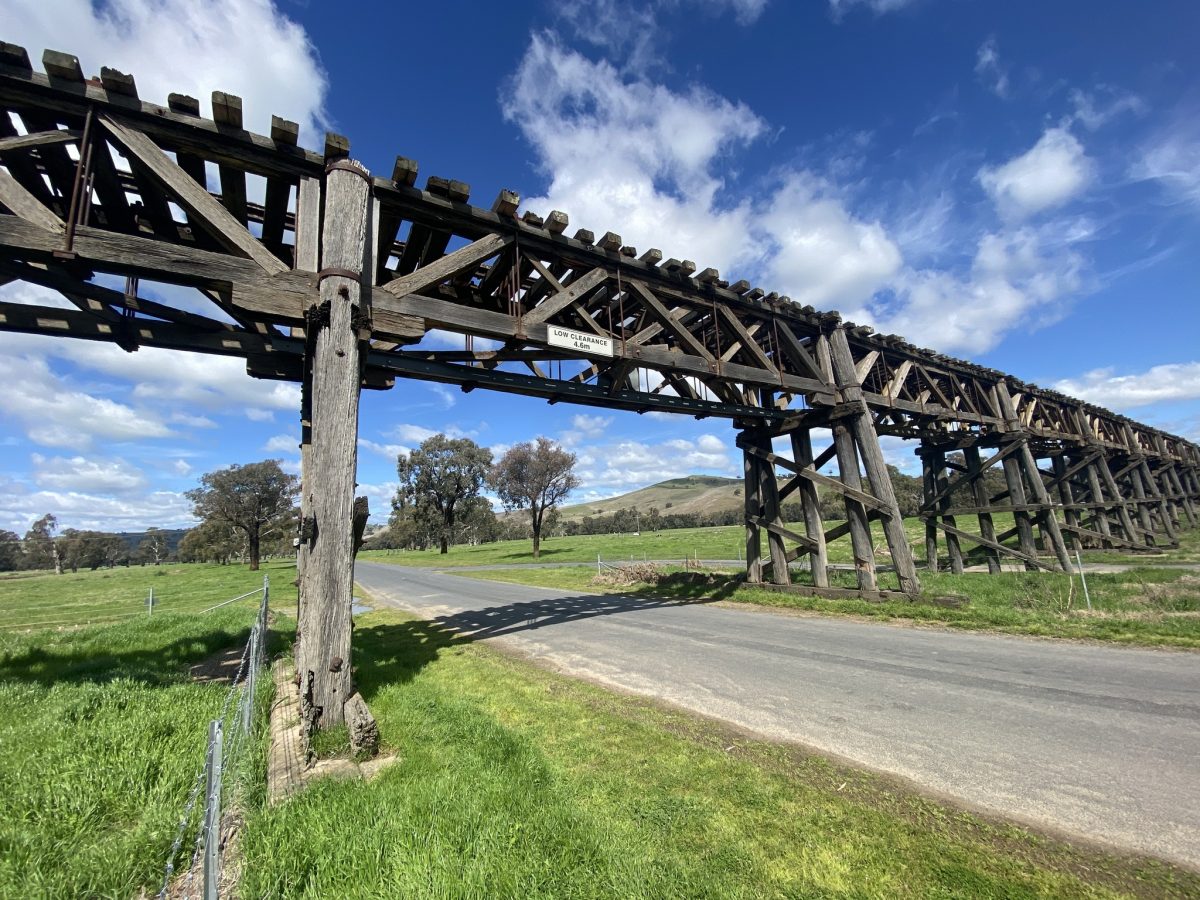
Transport for NSW is carrying out maintenance and safety improvement work on the timber rail viaduct in Gundagai along OI Bell Drive and Middleton Drive. Photo: Cootamundra Gundagai Regional Council.
The timber rail viaduct in Gundagai is undergoing maintenance and safety improvement work to protect pedestrians and motorists.
Cootamundra Gundagai Regional Council (CGRC) said Transport for NSW was carrying out the work.
“Work will be carried out on sections of the viaduct along OI Bell and Middleton drives to improve safety for transport customers,” CGRC said in a statement.
“Recent heavy rainfall and flooding have caused sections of the historic bridge to deteriorate.”
CGRC said the work would reduce the risk of falling debris and allow vehicles and pedestrians to safely travel under the bridge.
Traffic changes along OI Bell Drive will be in place for the duration of the work.
A ”Stop” sign at either side of the underpass on OI Bell Drive has been installed with other signage advising drivers of potential falling debris.
CGRC said it would keep the community updated on future work and planning for the bridge.
The timber viaducts and steel bridge spans at Gundagai are on the non-operational Cootamundra to Tumut branch line.
On 1 June, 1886, the railway line from Cootamundra, on the Main South line to Gundagai, was opened while the extension from Gundagai to Tumut, which includes the viaducts and bridge, was opened on 12 October, 1903, with the first train travelling across the structure on 3 December, 1903.
The line was officially closed in March 1985 following damage to some bridges, washaway of embankments and cutting instability due to flooding in August 1983 and January 1984.
The last train (a rail motor service) travelled across the Gundagai viaduct on 26 November, 1983.
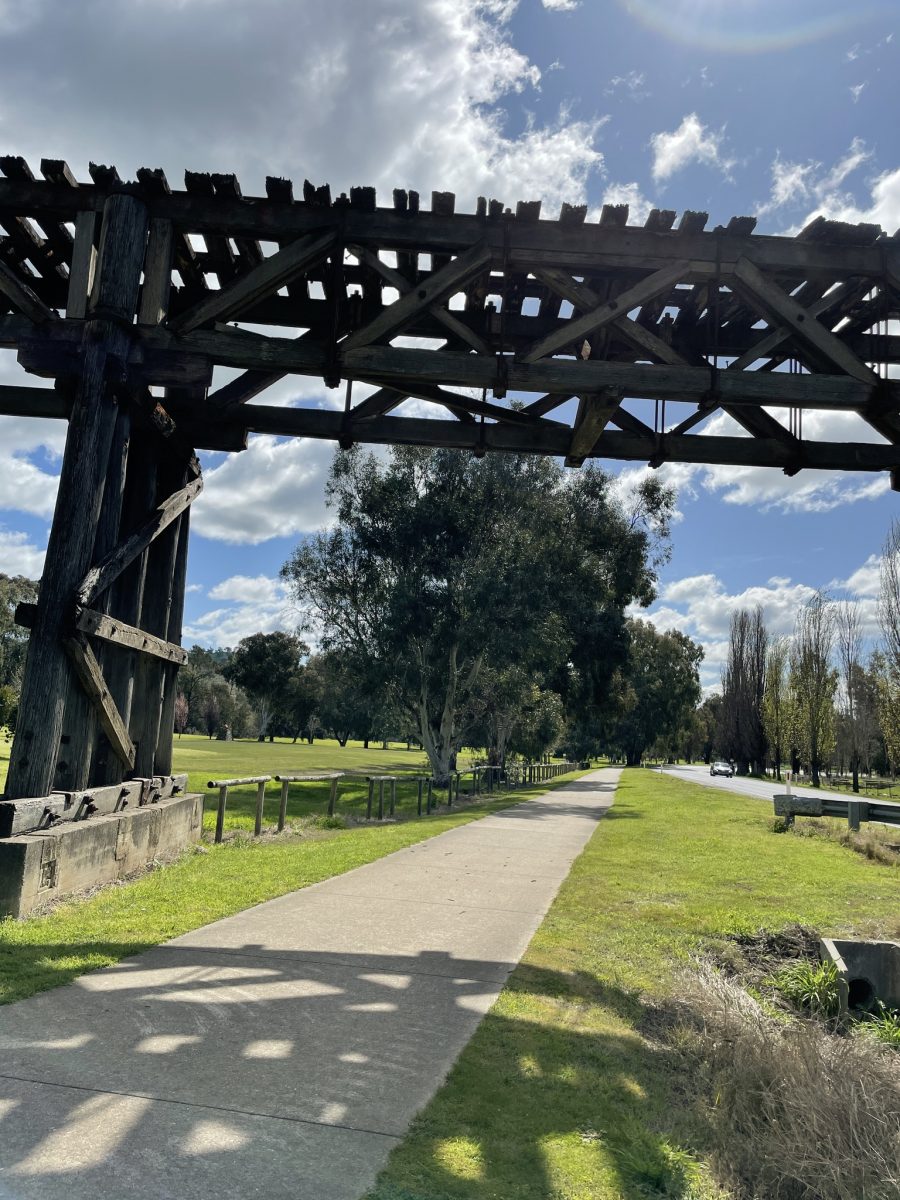
CGRC said the work would reduce the risk of falling debris and allow vehicles and pedestrians to safely travel under the bridge. Photo: CGRC.
The timber viaduct on the northern side of the Murrumbidgee River crosses two public roads, O.I. Bell Drive and Middleton Drive, and the timber viaduct on the southern side of the river crosses Tumut Street.
Public access can be gained to the entire length of both the northern and southern viaducts, except for the part within Morleys Creek, continuing to a fence line some 70 metres north of OI Bell Drive.
Due to safety concerns, the NSW Government removed the non-operational section of Prince Alfred Bridge (timber road viaduct) in November 2021.
The bridge was built in 1867 and was the first major bridge crossing over the Murrumbidgee River.
These spans were constructed in 1896 and have been a historical landmark at Gundagai, representing a bygone era and a glimpse into earlier engineering solutions.
The southern end of the bridge remains in service today, while a 715 m section to the north has been closed to traffic since 1984.
The State Government and the CGRC are working with the Gundagai community to acknowledge the historical significance of the former Prince Alfred Bridge.
Earlier this year, the Government commissioned a heritage expert to assess community feedback and identify the best options to memorialise the bridge.
More than 460 cubic metres of timber was salvaged from the viaduct for potential future use, including memorial options.








